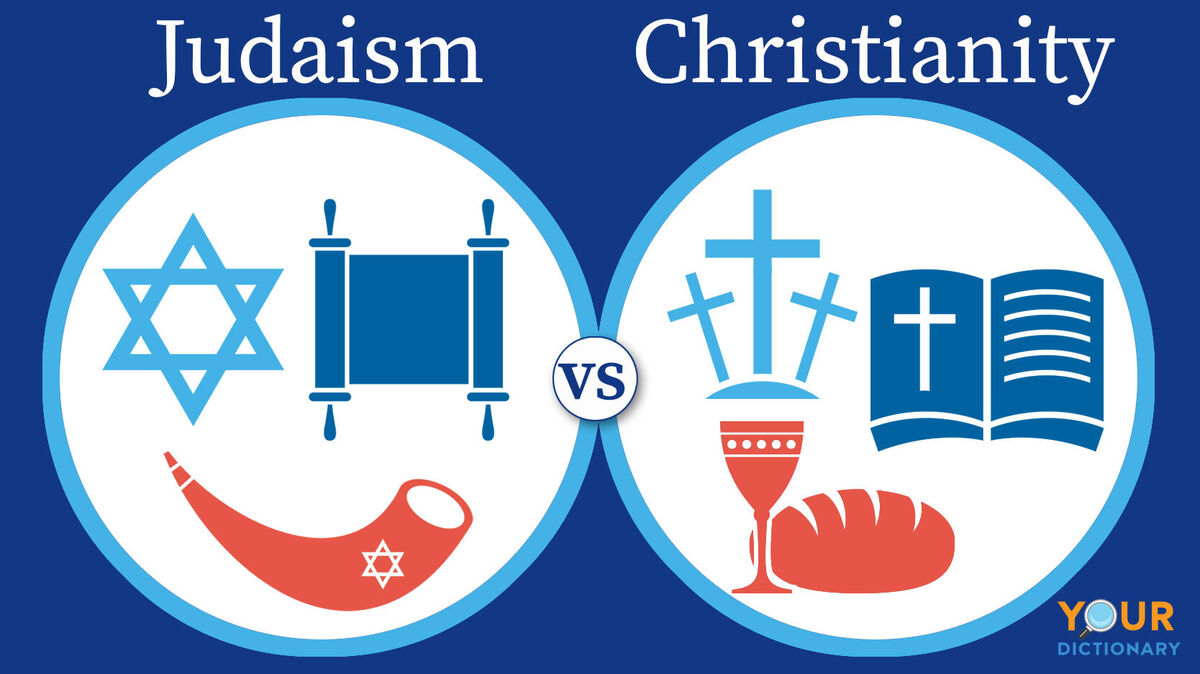
Judaism and Christianity are both monotheistic religions that are among the oldest and largest faiths in the world. Even with those similarities between Judaism and Christianity, these two belief systems are more different than they are alike. To better understand how these faiths differ, review some key differences in Judaism vs. Christianity.
Role of Jesus
Beliefs about Jesus are the most widely known difference between Judaism and Christianity. Christians believe that Jesus is the Messiah. In Christianity, Jesus is the son of God who took human forms to save believers from their sins. In Judaism, Jesus is not viewed as a divine being. Some view him as a Jewish teacher and the founder of Christianity, but not as a savior.
The Old Testament
The Old Testament of the Hebrew Bible is a central religious text in Judaism and Christianity alike. However, the two religions do not interpret the Old Testament in the same ways.
- Christians view the Old Testament as the first part of a story, which is completed in the New Testament through the Salvation of Jesus Christ, the Messiah.
- In Judaism, the central message of the Old Testament focuses on how God called Abraham to lead and set an example of obedience to the word of God.
The New Testament
The New Testament of the Bible is integral to Christianity but is not part of Judaism at all. It focuses on the life, death and resurrection of Jesus Christ.
The Torah
The Torah represents the first part of the Jewish Bible. It is made up of the first five books of the Old Testament. Because the Old Testament is part of Christianity, Jews and Christians alike accept these books.
- Jews believe that the Torah specifies God's instructions for how Jews should live. They believe that the Torah was dictated to Moses directly by God.
- These five books are simply considered part of the Old Testament in Christianity. They aren't any more or less significant than the rest of the Old Testament.
Trinity vs. Oneness
Judaism and Christianity do not share common beliefs about the nature of God as a divine being.
- In Christianity, God is viewed as a Holy Trinity, consisting of the Father, the Son (Jesus) and the Holy Spirit. Christians believe that Jesus became man.
- Judaism is based on the concept of the Oneness of God as a sole divine being.
Religious Significance of Jerusalem
In both Judaism and Christianity, Jerusalem is viewed as a sacred place of great religious significance.
- The Temple Mount in Jerusalem is the most sacred site in Judaism, largely due to the temples that once stood there. Jewish people face Jerusalem when they pray.
- Jerusalem is important in Christianity because of its role in the life of Jesus. It is where he lived and ministered as well as where he was crucified and resurrected.
Recognizable Symbols
The most recognizable symbol of Judaism is the Star of David. The most recognizable symbol of Christianity is the cross.
Judaism vs. Christianity: Significant Similarities
There are a few similarities Between Judaism and Christianity. Key aspects of faith shared by both religions include:
- monotheism (belief in a single God)
- the Old Testament of Hebrew Bible
- the 10 Commandments
Key Similarities and Differences: Judaism vs. Christianity
The chart below provides a quick overview of the key similarities between Christianity and Judaism. In the table below, the "X" symbol indicates that the listed item is part of a particular religion, while the "-" sign indicates that it is not.
Judaism |
Christianity |
|
| Jesus as Messiah | - | X |
| God became man | - | X |
| Monotheistic (one God) | X | X |
| Old Testament | X | X |
| The 10 Commandments | X | X |
| New Testament | - | X |
| The Torah | X | - |
| Holy Trinity | - | X |
| Significance of Jerusalem | X | X |
| Star of David symbol | X | - |
| Cross symbol | - | X |
Explore More Major Religions
Now that you understand the key differences between Judaism and Christianity as well as some of the similarities between these faiths, take the time to learn more about their basic beliefs, as well as those of other major religions. Start by exploring the five major world religions and their basic beliefs. Then, focus on learning the 5 pillars of Islam.